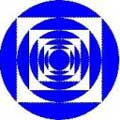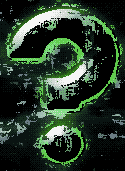Renewed Obsession
Contributed by: masodo on Monday, March 26 2018 @ 01:36 pm UTC
Last modified on
 [*1] Not one to let this internet fad get too far beyond my grasp, I have been obliged to explore the inner workings of the new HTML5 protocols[*2] for the construction of web pages. My studies have been mostly in the form of deconstructing some of the HTML5 games I have been installing over at the DeBurger Game Room[*3] online arcade.
[*1] Not one to let this internet fad get too far beyond my grasp, I have been obliged to explore the inner workings of the new HTML5 protocols[*2] for the construction of web pages. My studies have been mostly in the form of deconstructing some of the HTML5 games I have been installing over at the DeBurger Game Room[*3] online arcade.
 It must have been within the confines of that more methodical - dare I say, logical - mode of thinking that my pet thought exercise - the previously revealed inspiration for my gravitar icon [see: Mathematical Obsession? ] - concerning geometry of circumscribed square inscribed with circle, returned once again to my center of consciousnesses. This simple geometric construct has always suggested, to my mind, some hidden, cosmic significance. Beckoning me with those forces of the universe that can really only be explored through carefully administered mathematics.
It must have been within the confines of that more methodical - dare I say, logical - mode of thinking that my pet thought exercise - the previously revealed inspiration for my gravitar icon [see: Mathematical Obsession? ] - concerning geometry of circumscribed square inscribed with circle, returned once again to my center of consciousnesses. This simple geometric construct has always suggested, to my mind, some hidden, cosmic significance. Beckoning me with those forces of the universe that can really only be explored through carefully administered mathematics.
Not one to let my inability to carefully administer mathematics hinder me in an attempt, I took it upon myself to create within the esoteric mechanics of the javascript programming language, a representation of this geometric abstraction/distraction that offered an added dimension to my usual 2 dimensional envisagement of form by the inclusion of the fourth with a suggestion of the third; an exercise I entered into with all the certainty of a theoretical physicist albeit without the typically manditory, prerequisite education.
 [*4] Armed only with the preconceived notion of what I wanted to depict I - by way of the internet - became myself, a virtual cog in the machine with which the global, computational hive-mind works tirelessly to replicate itself through the dissemination of knowledge among the hairless apes in a way that stresses the inevitable futility of resistance.
[*4] Armed only with the preconceived notion of what I wanted to depict I - by way of the internet - became myself, a virtual cog in the machine with which the global, computational hive-mind works tirelessly to replicate itself through the dissemination of knowledge among the hairless apes in a way that stresses the inevitable futility of resistance.
 It was while immersed in the vagaries of determining the proper expansion rates of circles in comparison to squares that I happened upon a quite irrational[*6] little discovery that I have learned has been known since 1600 - 1800 B.C. Mesopotamia, as evidenced in the Babylonian clay tablet known as YBC 7289[*5] (from the Yale Babylonian Collection. Image to the left †) The required incantation invoked in order to bring to life my vision of the infinitely expanding, nested shapes was what is commonly referred to as "The Square Root of Two" or more precisely: "approximately 1.41421356237..."
It was while immersed in the vagaries of determining the proper expansion rates of circles in comparison to squares that I happened upon a quite irrational[*6] little discovery that I have learned has been known since 1600 - 1800 B.C. Mesopotamia, as evidenced in the Babylonian clay tablet known as YBC 7289[*5] (from the Yale Babylonian Collection. Image to the left †) The required incantation invoked in order to bring to life my vision of the infinitely expanding, nested shapes was what is commonly referred to as "The Square Root of Two" or more precisely: "approximately 1.41421356237..."
The result of this exercise is presented within the "iFrame" below followed by the code required to draw the effect. Those who do not understand such things should stand in awe of my achievement. Those who can see quite clearly when they peer into the supplied code will rightly bust-a-gut at the hack chosen to render the desired effect. In either case, I hope that when you gaze upon this meager point-plot animation you will remember those early humanoids as well as this somewhat more recently developed model together in that same moment wherein you wonder, "what were they thinking?"
"CubeSphere" by masodo
The HTML5/javascript code to render the above animation:
† A black and white rendition of the Yale Babylonian Collection's Tablet YBC 7289 (c. 1800–1600 BCE), showing a Babylonian approximation to the square root of 2 (1 24 51 10 w: sexagesimal) in the context of Pythagoras' Theorem for an isosceles triangle. The tablet also gives an example where one side of the square is 30, and the resulting diagonal is 42 25 35 or 42.4263888... Source: Bill Casselman and the Yale Babylonian Collection.[*7]
[tag:musing mathematics geometry computing html5 educational art historic strange]